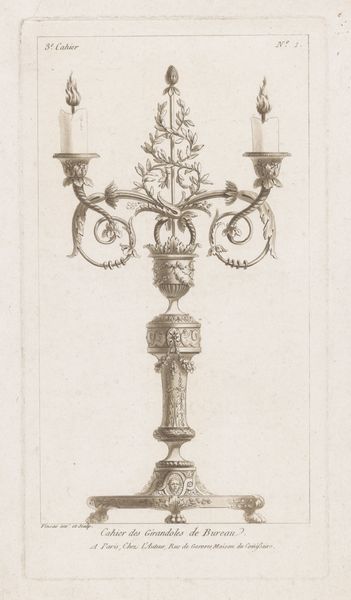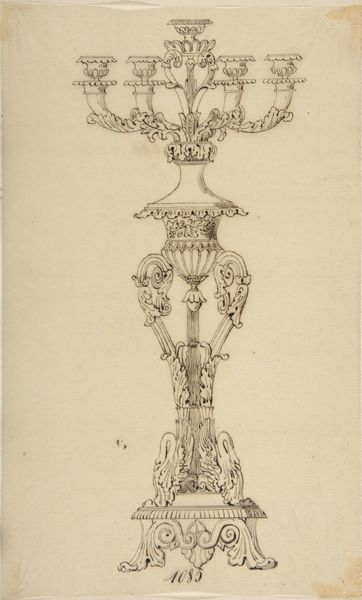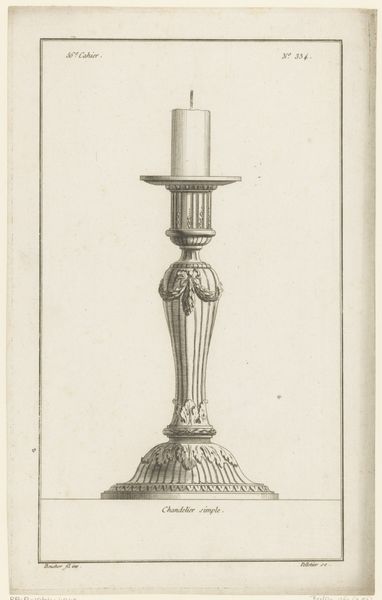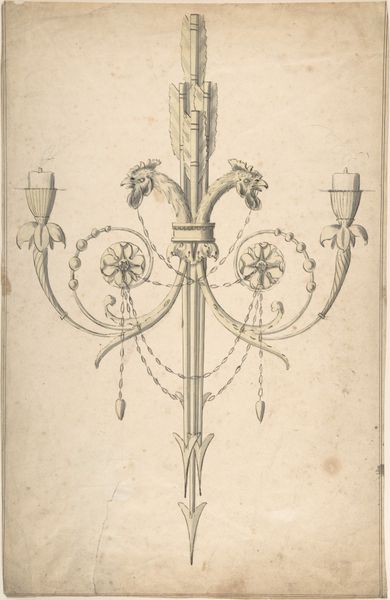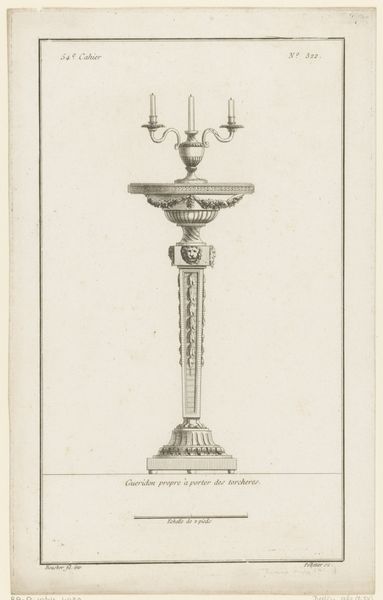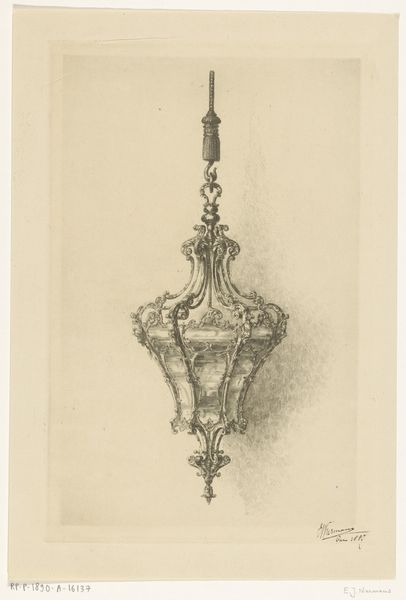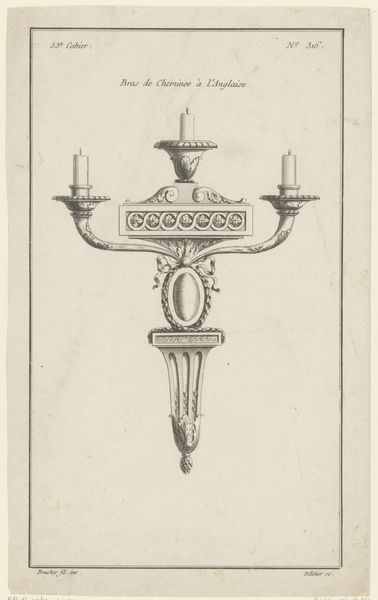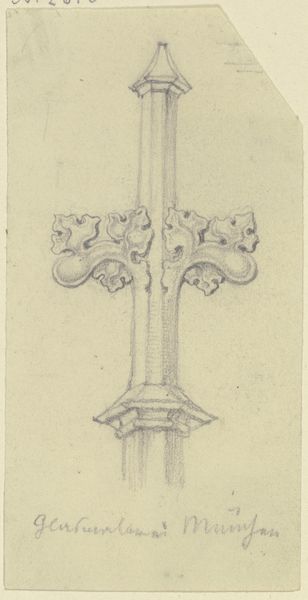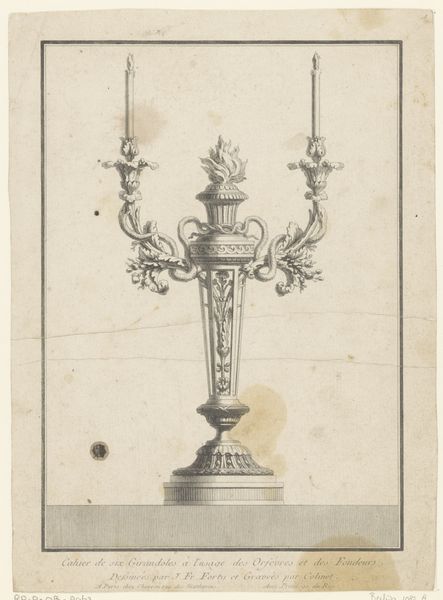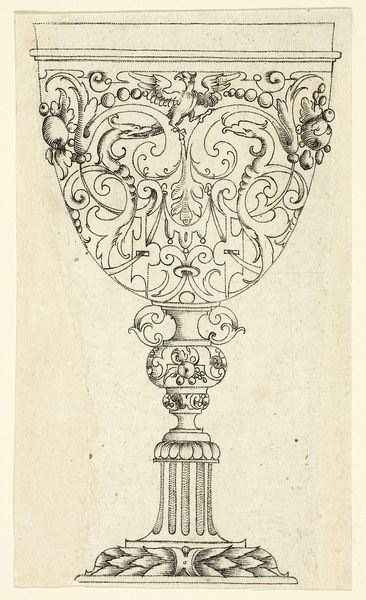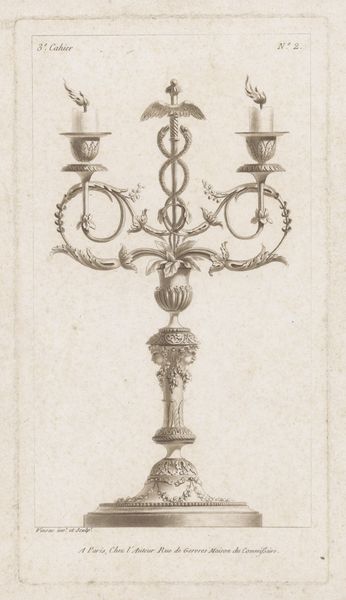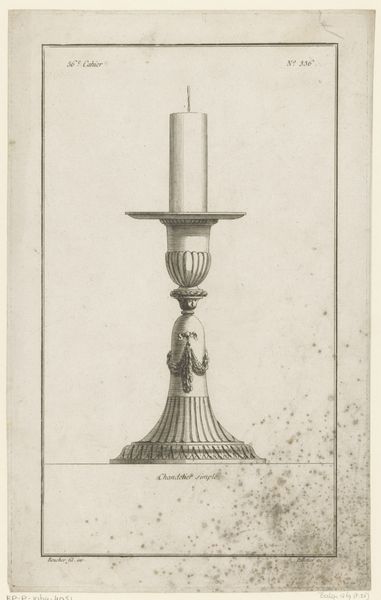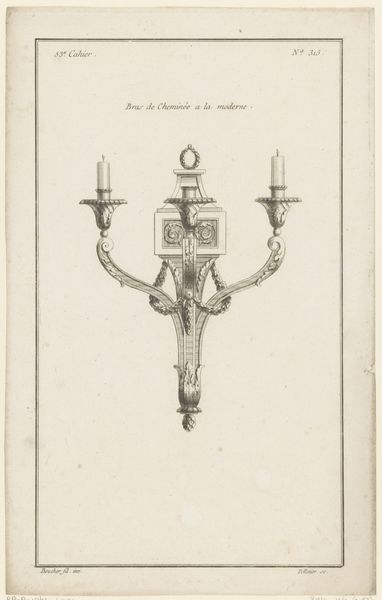
Candelabrum with Alternative Designs for the Arms 1770 - 1816
0:00
0:00
drawing, print, pencil
#
drawing
#
neoclacissism
# print
#
pencil
#
academic-art
#
decorative-art
Dimensions: 25 1/16 x 19 1/2 in. (63.7 x 49.5 cm)
Copyright: Public Domain
Curator: We're looking at "Candelabrum with Alternative Designs for the Arms" by Henri Auguste, created between 1770 and 1816. The media used are pencil, print, and drawing. It's a study, essentially, housed at the Metropolitan Museum of Art. Editor: It’s a very austere drawing, almost bleached of color. The intricate design is intriguing, but there is also something cold about it, in its pristine presentation, far from the reality of the foundry where these ideas were realized in bronze or ormolu. Curator: The draughtsmanship is superb. Look at the play of line and form – how the artist has meticulously rendered the various neoclassical motifs and their elegant interplay. The central column rises with confident symmetry. We can examine how these design alternatives function structurally in relation to the whole piece. Editor: Yes, but let's think about the actual making of something like this. The pencil and print are tools, a means to an end. Consider the unseen labor: the bronze casters wrestling with molten metal, the ormolu workers, gilding the details with mercury – a deadly process, mind you! All this is absent from the final, clean representation we see here. Curator: A fair point. But that clean presentation gives this work its symbolic force, situating it squarely within the neoclassical revival. We can see references to antiquity in every carefully considered curve and acanthus leaf. Consider the symbolic weight that something like a candelabrum carried as a demonstration of both wealth and taste. Editor: And taste being determined by the material means of consumption! What this drawing disguises is how these objects functioned within systems of patronage. Aristocrats and the emergent bourgeoisie flaunted their command over resources, exploiting both labor and material. How might we rethink this design beyond its mere aesthetic achievement? Curator: It is a dance of forms in balanced harmony. Thinking beyond our present material analysis is the point in this instance, surely. Editor: Fair enough. It is elegantly presented and a product of particular labor dynamics, a symbol and physical creation intertwined.
Comments
No comments
Be the first to comment and join the conversation on the ultimate creative platform.

